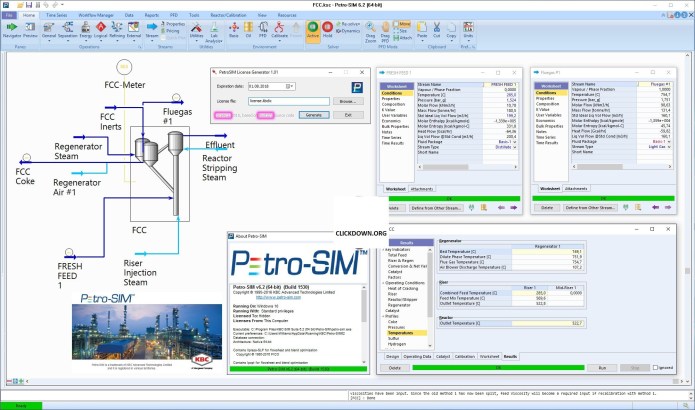Webinar on Asphaltene and Wax Formation Analysis in a FPSO and in a Refinery using Petro-SIM Software

About Course
Asphaltene and Wax Formation Analysis:
Asphaltene and wax phase behavior is quite different than the conventional “PVT” phase behavior. Asphaltenes exhibit a behavior at some thermodynamic states called flocculation. That is, asphaltene particles or micelles aggregate or flocculate into larger aggregates or flocs. The locus of all thermodynamic points in a P-T-x phase diagram at which flocculation occurs is called the Asphaltene Deposition Envelope (ADE). Paraffin waxes, on the other hand, at some thermodynamic states, exhibit the phenomenon of crystallization. The locus of all thermodynamic points in a P-T-x phase diagram at which wax crystallization occurs is called the Wax Deposition Envelope (WDE). Asphaltene flocculation can be both reversible and irreversible (as expected from the asphaltene colloidal nature). Wax crystallization is generally a reversible process. However, paraffin waxes more than often precipitate together with resins and asphaltenes (which are said to be responsible for the observed irreversible thermodynamic phenomena). Hence, some wax precipitation is occasionally reported as irreversible. Measurement of the ADE and WDE boundaries, at in-situ conditions, is a challenging task. Measurement of asphaltene and wax solubility at in-situ conditions inside the ADE and WDE is even more challenging. The ADE and WDE data have practical significance and are very useful for modeling of reservoir fluid behavior. Asphaltene and wax data for a number of oils are presented and analyzed. This paper introduces and compares two powerful thermodynamic diagrams that summarize the phase behavior of asphaltenes and waxes, the ADE and WDE.
In this webinar you can find out more about how you can rigorously model waxes and asphaltenes in oil, predicting with a high degree of accuracy the temperature, pressure and composition conditions favourable to the deposition of such components. The webinar includes case studies of an FPSO facility and a refinery.
Source : www.kbc.global
Course Content
Asphaltene and Wax Formation Analysis
-
Asphaltene and Wax Formation Analysis
42:58
